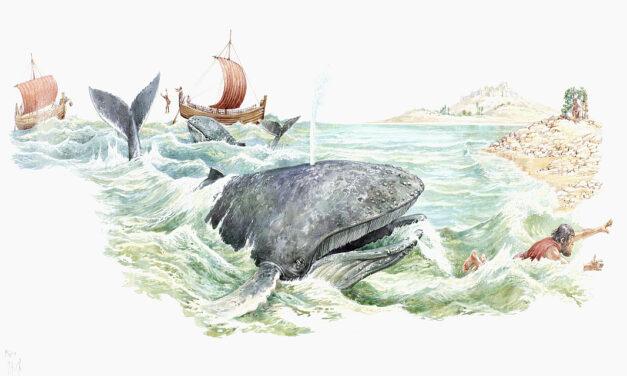This article first appeared in the Christian Research Journal, volume 25, number 3 (2003).
Jesus was a “peasant Jewish Cynic,” who never thought of Himself as the Jewish Messiah, much less the Son of God or the Savior of the world. This is the view held by John Dominic Crossan of the Jesus Seminar, reputed to be one of the world’s leading experts on the historical study of Jesus.1 According to Crossan and others who share his view, Jesus was simply an itinerant preacher who taught that the kingdom of God had to do with how the world would be run if God sat on Caesar’s throne. Jesus’ ministry had nothing to do with helping people find God, salvation, or heaven.
In the past 10 years, Crossan has written numerous books and articles about Jesus2 and has appeared in several videos,3 debates,4 and teleconferences.5 He has also appeared on numerous television programs including the ABC prime-time special entitled, “The Search for Jesus,” Discovery Channel’s “Jesus: The Complete Story,” and the PBS Frontline program, “From Jesus to Christ.”6 If the members of your church or class have not been exposed to Crossan’s teachings, it is likely that they will be.
Because Crossan’s view of Jesus is so different from the historic Christian view of the Jesus of the Gospels, we need to be prepared to give a response to church members, students, and those to whom we witness who have been exposed to Crossan’s “scholarship.”
CROSSAN’S OTHER GOSPELS
Since the New Testament Gospels are clear about who Jesus is, we might begin by asking how Crossan arrived at such dramatically different conclusions. At the risk of oversimplifying Crossan’s approach, he virtually ignores most of the material in the Gospels and relies instead on other sources he thinks were written before the Gospels. He calls these “first strata” sources. To qualify as a first strata source, the document had to be written between a.d. 30 and 60. Because Crossan dates the New Testament Gospels from the a.d. 70s to 90s, none of them qualifies as a first strata source.
Crossan’s sources include actual documents such as the Egerton Gospel,7 Papyrus Vindobonensis 2325,8 Papyrus Oxyrhynchus 1224,9 the Gospel of the Hebrews,10 and the Gospel of Thomas.11 Crossan usually doesn’t bother to mention that the vast majority of scholars believe that these documents, which in some cases are only short scraps of text, were written in the second century a.d. or later — long after the New Testament Gospels!
Other sources Crossan relies on are merely hypothetical — that is, they are based entirely on speculations. These include the Miracles Collection,12 the Apocalyptic Scenario,13 and the so-called Cross Gospel.14 The Cross Gospel, for example, comes from the Gospel of Peter, which is a second-century apocryphal gospel. Crossan contends that the writer of the Gospel of Peter had copied from an earlier source. He pulls some verses out of the Gospel of Peter and claims that he has recovered that earlier source, which he calls the “Cross Gospel.” Crossan then proclaims that this Cross Gospel was written before the canonical Gospels. Few scholars agree on either count, and without supporting evidence Crossan’s Cross Gospel remains a merely hypothetical source.
The discerning Bible student will remember that the apostle Paul wrote most of his letters (epistles) between a.d. 30 and 60, which would qualify them as first strata sources. Since Crossan includes 1 Thessalonians, Galatians, 1 Corinthians, and Romans in his first strata sources, and since these letters clearly present Jesus as the Messiah, Savior, and Son of God, one might wonder on what basis Crossan denies these truths about Jesus.
The reason is that Crossan’s primary criteria for determining historical reliability is multiple independent attestation. This means that something must be attested to in more than one independent source in order for it to be considered reliable historical evidence. The criteria of multiple independent attestation is actually a valid, fact-finding method. It is what journalists do when they verify their information in more than one source before printing it; since Paul wrote all four letters, however, they count as only one source.
We might assume, therefore, that Paul is the only one of Crossan’s first strata sources that presents Jesus as Messiah, Savior, and Son of God. We would be wrong.
MESSIAH
Jesus is said to be the Messiah not only in the four Pauline letters Crossan considers genuine — Galatians, 1 Thessalonians, 1 Corinthians, and Romans — but also in two other first strata sources as well. The Gospel of the Hebrews, one of Crossan’s first strata sources (not to be confused with the New Testament book of Hebrews) explicitly calls Jesus the Christ or Messiah several times and speaks of Him as the One who reigns forever.15 Another first strata source is the Cross Gospel, which says that Jesus was mocked by being crowned with thorns and hailed as the king of Israel.
In Jesus’ day, anyone who challenged Herod as a rival king was most likely viewed as a would-be messiah. This is a fact that Crossan himself seems to admit. In his book, The Historical Jesus, Crossan discusses five men from the first century a.d. whom he recognizes as would-be messiahs.16 His source for this information is Josephus, a first-century Jewish historian who wrote between a.d. 70 and 90. Josephus did not explicitly call any of these five men a messiah, but Crossan considers them would-be messiahs because each of them had aspirations to royalty.
While Crossan acknowledges five first-century men as would-be messiahs, he does so on the basis of only one source, Josephus, who does not even qualify as a first strata source. Crossan denies, on the other hand, that Jesus thought of Himself as the Messiah even though three of Crossan’s own first strata sources identify Jesus as Messiah.
SAVIOR
Paul called Jesus’ death a sacrifice of atonement17 and likened it to the sacrifice of the Passover lamb.18 Paul said that for those who have faith in Jesus,19 His death results in redemption,20 justification,21 reconciliation,22 salvation,23 eternal life,24 removal of condemnation,25 and rescue from the coming wrath.26 The Christian might believe that Paul’s word is sufficient evidence to show that Jesus was known by His earliest followers as Savior, but in Crossan’s methodology there must be two or more independent sources to confirm this fact — and again, there are.
The second source is the Cross Gospel, which says one of the men being crucified with Jesus called Jesus the “savior of men.”27 A possible third source is the Gospel of Thomas 82, which quotes Jesus as saying he “who is far from me is far from the kingdom.” Entrance into the kingdom, according to this passage, was dependent on having a relationship with Jesus.
Three of Crossan’s earliest sources, therefore, seem to present Jesus as the Jewish Savior, and according to one of these sources, Jesus believed this to be true about Himself. In first-century Jewish society there was only one true Savior and that was God.
INCARNATION / DEITY
The fact that three of Crossan’s first strata sources present Jesus as the One who brings salvation — something only God could do — raises the question of whether these sources also proclaim Jesus as the incarnation of God. The answer is yes.
First, not only did Paul claim that all things exist through Jesus, but he also called Jesus the Son of God28 and the Lord of Glory.29 He even applied Joel 2:32 directly to Jesus, though in its original context it referred to God.30 In addition, many scholars believe Romans 9:5 in the original Greek directly calls Jesus God.31
Second, the Gospel of the Hebrews clearly teaches the preexistence and incarnation of Jesus, calling Him the first-begotten Son who reigns forever.32 According to the Gospel of the Hebrews, “When Christ wished to come upon earth to men,” God entrusted Him to the angel Michael, who came into the world as Mary.33 While this is a rather fanciful way of portraying Jesus’ incarnation, the point is that the Gospel of the Hebrews clearly teaches that Jesus is the incarnation of God.
Finally, hints of Jesus’ incarnation are in Crossan’s Miracles Collection and in the Gospel of Thomas. According to the Gospel of Thomas 77, Jesus said that it is from Him that all came forth. The passage is open to interpretation, but it sounds strikingly similar to 1 Corinthians 8:6, in which Paul said there is “one Lord, Jesus Christ, through whom are all things and through whom we exist” (NRSV).34 In Crossan’s Miracles Collection, Jesus is charged with blasphemy, and even Crossan acknowledges that being “equal to God is implicitly present in the accusation of blasphemy from Mark 2:7,” which is part of Crossan’s Miracles Collection.35 It appears, therefore, that three or four of Crossan’s first strata sources assert that Jesus was the incarnation of God.
CROSSAN’S OTHER JESUS
Nothing in this article should be construed as lending support to Crossan’s creation of sources out of whole cloth, such as the Cross Gospel, the Apocalyptic Scenario, or the Miracles Collection. The purpose of this article is to show that even if all of Crossan’s first strata sources really were written earlier than the New Testament Gospels, and even if we accepted only data that could be attested in two or more sources, nevertheless, the Jesus we find in these sources is radically different from the Jesus Crossan proclaims. Crossan proclaims Jesus as a “peasant Jewish Cynic” who preached a message of egalitarianism and did not think of Himself as the Messiah, much less as someone who was equal with God Crossan’s first strata sources, however, actually paint a picture of Jesus as the Jewish Messiah, Savior, and incarnation of God. When believers, therefore, see Crossan denying the historic Christian view of Jesus in his books, articles, and television appearances, they need not be concerned that new sources or research methods have undermined their faith.
NOTES
- John Dominic Crossan, The Historical Jesus: The Life of a Mediterranean Jewish Peasant (San Francisco: HarperSanFrancisco, 1991).
- “Adventure Story,” Bible Review 16, 5 (2000): 27; “Blessed Plot: A Reply to N. T. Wright’s Review of ‘The Birth of Christianity,’” Scottish Journal of Theology 53, 1 (2000): 92; “The Challenge of Christmas: Two Views,” Christian Century 110, 36 (1993): 1270; “Commentary and History,” Journal of Religion 75, 2 (1995): 247; “Earliest Christianity in Counterfactual Focus,” Biblical Interpretation 8, 1–2 (2000): 92–112; “The Life of a Mediterranean Jewish Peasant,” Christian Century 108, 37 (1991): 1194; “A Tale of Two Gods,” Christian Century 110, 36 (1993): 1270; “What Victory? What God? A Review Debate with N. T. Wright on ‘Jesus a Victory of God,’” Scottish Journal of Theology 50, 3 (1997): 345; “Why Christians Must Search for the Historical Jesus,” Bible Review 12 (1996): 34–39, 42–45.
- A Death in Jerusalem (Sonoma, CA: Polebridge Press, 1996); Faces on Faith: An Interview with John Dominic Crossan (Nashville: EcuFilm, 1995); Faith and Reason (Shreveport, LA: D. L. Dykes, Jr. Foundation, 1997); The Historical Jesus and Earliest Christianity (Louisville, KY: Louisville Presbyterian Theological Seminary, 1996); The Historical Jesus Lecture (Duluth, MN: University of Minnesota at Duluth, 1995); Jesus and the Kingdom: Peasants and Scribes in Earliest Christianity (New York: Parish of Trinity Church, 1996); Jesus the Peasant (Topeka, KS: Washburn University, 1993); Westar Institute and the Jesus Seminar Present John Dominic Crossan: Jesus, a Revolutionary Biography (Sonoma, CA: Polebridge Press, 1994).
- See Paul Copan, ed., Will the Real Jesus Please Stand Up? A Debate between William Lane Craig and John Dominic Crossan (Grand Rapids: Baker, 1999).
- Jesus @ 2000 (New York: Episcopal Cathedral Teleconferencing Network, 1996); The Jesus Summit: The Historical Jesus and Contemporary Faith (San Francisco: HarperCollins, 1994).
- “The Search for Jesus” (ABC News Special, 2000); “From Jesus to Christ: The First Christians” (Frontline, Public Broadcasting System, 1998); “Jesus: The Complete Story” (Discovery Channel, 1998).
- The Egerton Gospel, or Papyrus Egerton 2 as it is usually known, is a papyrus document discovered in 1935, consisting of two full leaves and a part of a third. Much of the content is parallel with the Gospel of John. It is usually dated between a.d. 150 and 200. See Wilhelm Schneemelcher, ed., New Testament Apocrypha, vol. 1 (Louisville, KY: Westminster John Knox Press, 1991), 96.
- Discovered in 1885, this papyrus leaf is also known as the Fayyum Fragment. It consists of only a few lines dealing with the prediction of Peter’s betrayal of Jesus. Schneemelcher comments that “the brevity of the fragment forbids sure statements of any kind.…” (Schneemelcher, 102.)
- “The remains of a papyrus book, the writing of which points to the beginning of the 4th century.…” (Schneemelcher, 100.)
- The Gospel of the Hebrews was probably written in the first half of the second century and is known from quotations by Cyril of Jerusalem, Jerome, Origen, and Clement of Alexandria.
- Crossan proposes two editorial strata to the Gospel of Thomas. The first strata, which he dates to ad 50, consists of passages that have parallels with the canonical gospels. The second strata consists of everything else. (Crossan, Historical, 427.) The fourth-century church historian, Eusebius, listed the Gospel of Thomas as being rejected by the church. For an excellent summary of the issues, see John Meier, A Marginal Jew, vol. 1 (New York: Doubleday, 1991), 139. Meier, one of the world’s leading experts on the historical study of Jesus, argues for a second-century date for the Gospel of Thomas.
- The Miracles Collection is a reconstruction of a hypothetical source for the miracles in Mark 2, 6, and 8; John 5, 6, 9, and 11; and the Secret Gospel of Mark. (Crossan, Historical, 429.)
- The Apocalyptic Scenario is a hypothetical document, which, according to Crossan, “is a common apocalyptic source behind both Did. 16:3–8 and Matt. 24:10–12, 30a.…” (Crossan, Historical, 429.)
- According to Crossan, the Cross Gospel is now embedded in The Gospel of Peter. It consists of Peter 1:1–2; 2:5b–6:22; 7:25; 8:28–9:34; 9:35–10:42; and 11:45–49. (Crossan, Historical, 429.) The Gospel of Peter was mentioned in early Christian writing, including Eusebius, who lists it among those works not recognized by the church. Schneemelcher suggests a date of the middle of the second century a.d. (Schneemelcher, 217–21.)
- Schneemelcher, 177.
- Judas in Galilee, Simon in Perea, Athronges in Judea, Manahem son (or grandson) of Judas the Galilean, and Simon son of Gioras. (Crossan, Historical, 200–204.)
- Rom. 3:21–26.
- 1 Cor. 5:7.
- Rom. 3:22–30; Gal. 2:16–20; 3:2–29.
- Gal. 3:13–14.
- Rom. 4:25; 5:16, 18.
- Rom. 4:24–25; 5:1, 6, 8, 10; 6:9; 7:4.
- Rom. 10:13, 17; 1 Cor. 1:18, 23–24, 30.
- Rom. 2:7; 5:21; 6:23.
- Rom. 8:1.
- Rom. 5:9; 1 Thess. 1:10.
- Cross Gospel 4:13. While the word “savior” in a first-century context could refer to one who was to deliver the Jews from the Romans, it is hard to imagine that a man being crucified by the Romans would refer to a fellow crucifixion victim as a deliverer from the Romans. It is more likely that the writer of the Cross Gospel is providing independent attestation to the idea of Jesus as the Savior in the full Pauline sense of the word.
- Rom. 1:9; 8:3, 29, 31–32; 1 Cor. 1:9; Gal. 1:15–16; 4:4–5; 1 Thess. 3:13.
- 1 Cor. 2:8.
- Joel 2:32; Rom. 10:13.
- E.g., Murray Harris, Jesus as God: The New Testament Use of Theos in Reference to Jesus (Grand Rapids: Baker, 1992), 143–72. See also the English Standard Version and the New Living Translation.
- Schneemelcher, 177.
- Gospel of the Hebrews, as quoted by Cyril of Jerusalem (Schneemelcher, 177).
- It is also, of course, strikingly similar to Col. 1:15–17, which teaches that through Jesus all things were created and in Him all things hold together. Crossan attributes Colossians to a disciple of Paul and places it in his second strata. (Crossan, Historical, 430.)
- See Crossan, Historical, 324.








